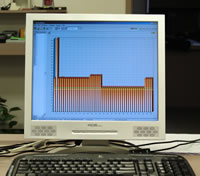In most businesses, there are three things people will consider first and foremost about how they conduct everything in their business. The first is quality – regardless of whether they can fulfill it, any decent company is looking to provide its customers with the best quality. Not only does this create the impression that the company is trustworthy, but it will make it more likely that customers will prefer its brand. The next thing a company prioritizes is price – wherein the company tries to find a nice balance between “profitable” for the company and “affordable” for the customer. Finally, effectiveness stands out quite a bit. Effectiveness with cost and with time. In this position, a business owner is going to have to decide how he or she wants to manage their business, and with respect to engineers and manufacturing managers, one thing that may come up is the pros and cons of rapid prototyping.
Pros
When time equals money, it’s more important than ever to utilize systems such as rapid prototyping. By using a computer-aided design program, companies can create prototypes more quickly and efficiently. It can also allow the prototype designers to create a more more precise image of what they are trying to create. It is especially useful for project managers who are creating more low-key things, as a more efficient method can help them go through these simpler projects and move onto the next project.
Cons
On the other hand, using a CAD program to do rapid prototyping is not a guaranteed success for one’s business. Everything has its time and place as people say, and rapid prototyping fits that well. Bigger projects that quite honestly should not be blazed through are a great example of this. The values introduced by rapid prototyping diminish as the complexity and importance of a project increases. While a project manager may feel pressured to push this big project out the door, if he or she is not careful, the project may set the company back far more than if it was just designed with traditional prototyping methods instead.
In closing
Whether to use rapid prototyping in a project is not a simple question to answer – it all must depend on what kind of style of prototyping is necessary. If it’s a simple or small project, it would do well – but something larger or more complex may only suffer as a result.
